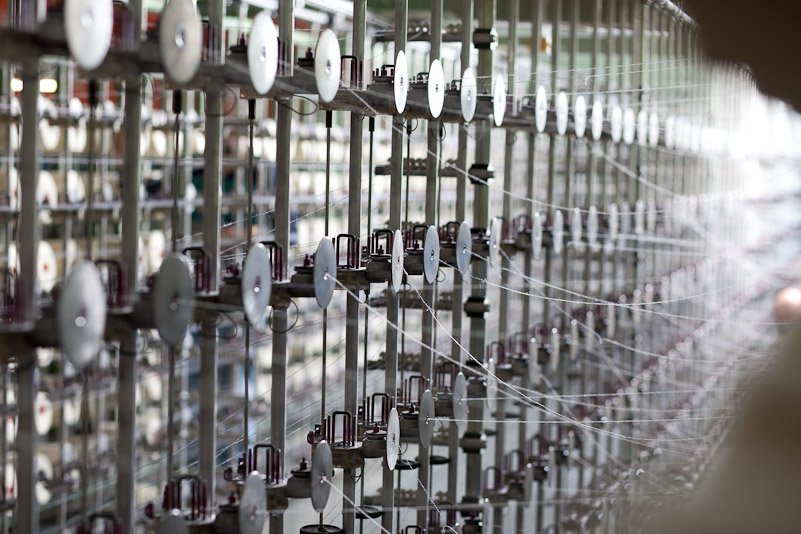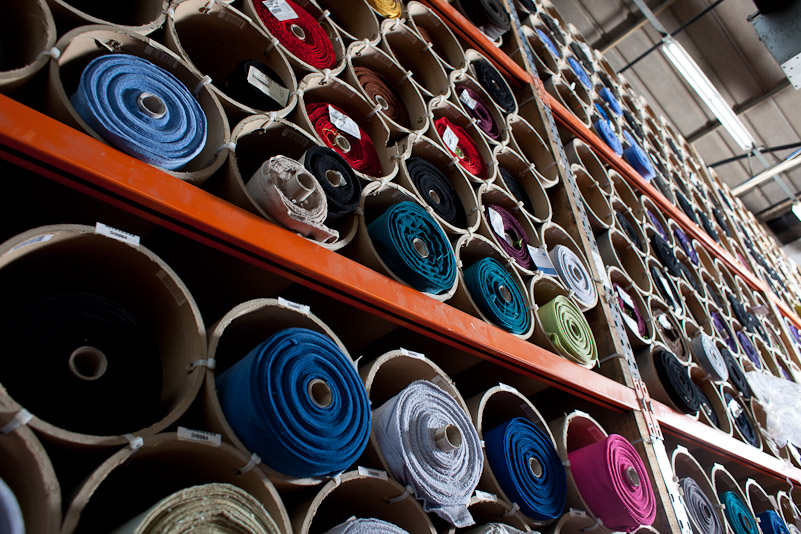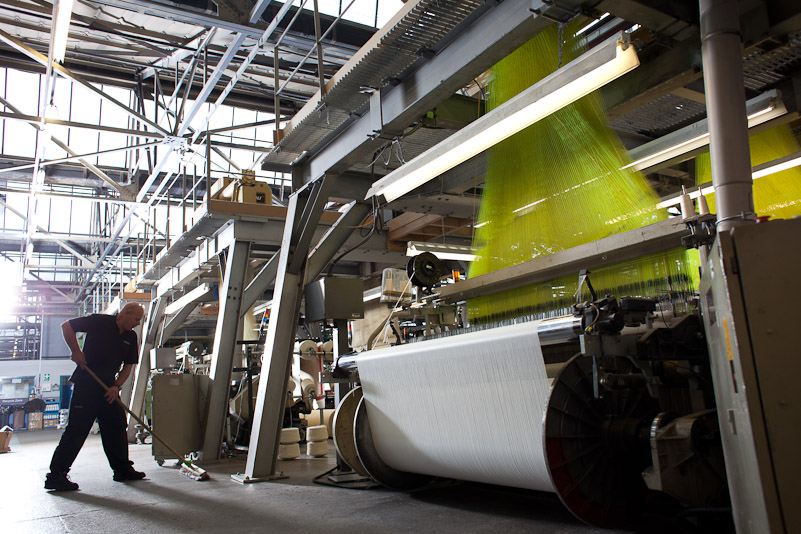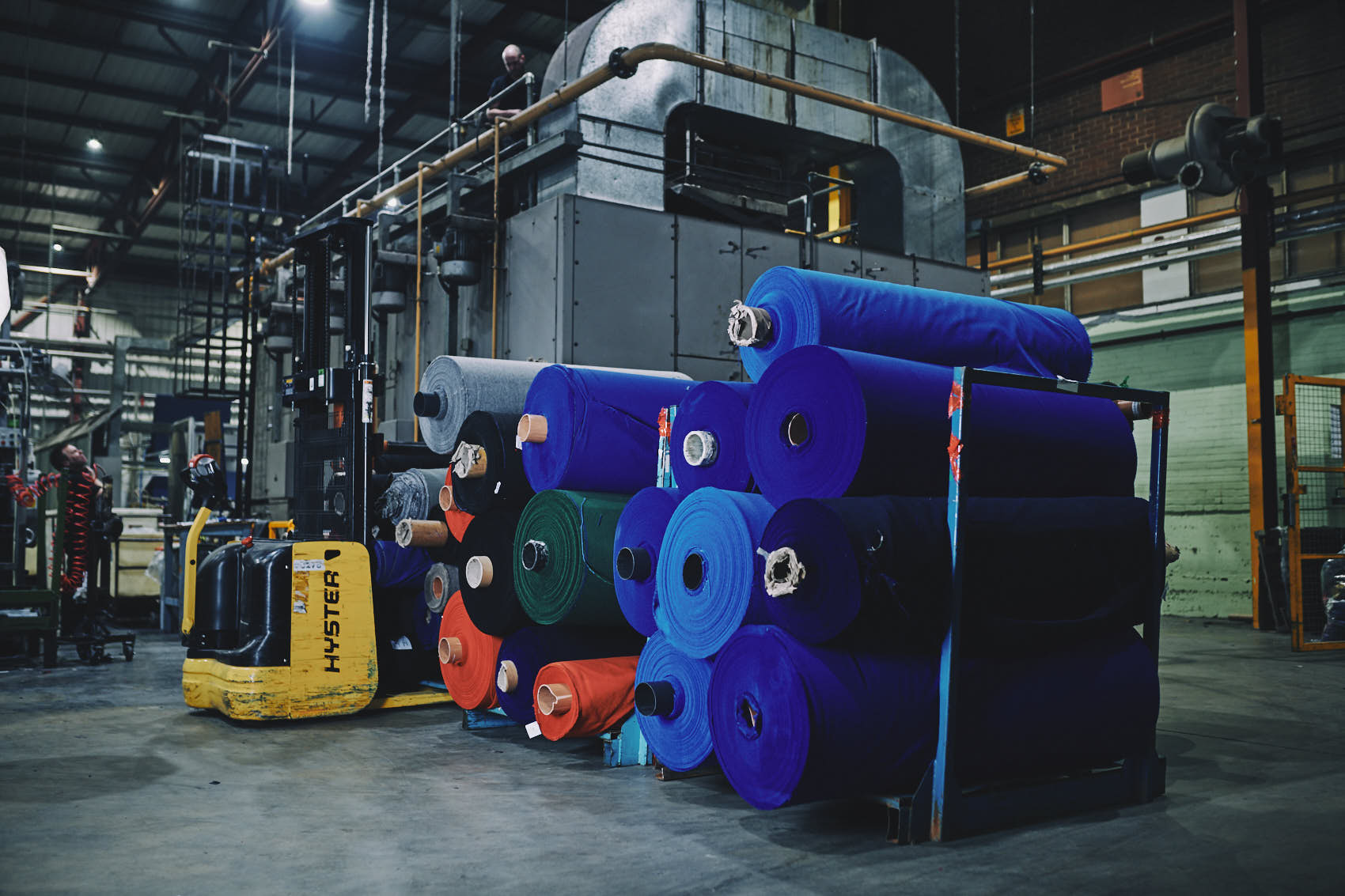At the beginning of the month Pearce Bottomley Architects were invited to take part in a factory and facilities tour of Camira Fabrics in West Yorkshire, where we were shown all the different processes behind the creation of their award-winning fabrics.
The day began with a brief introduction at Camira’s head office in Mirfield. The team were given an overview of the company’s history as well as a description of their vision for the future, which emphasised their ambitions to increase, an already impressive, commitment to sustainability.
We were then shown around the design studio facilities where trends for fabric styles and applications are developed. We were guided through the research process of identifying different colours, textures and tones that will become influential in the coming months and years. Large “Trend Boards” adorned the walls of the studio, encouraging people to add inspirational images and news articles which facilitated the evolution and exploration of particular trends.
Sustainability is a big part of Camira’s business ethos, this has been recognised by the “Queen’s Award for Sustainable Development” which has been awarded to the business on two occasions. During our tour of the design studio it was explained to us how the use of different plant materials, such as Hemp, Flax and Jute (collectively known as Bast Fibres) are becoming more and more prevalent in the creation of their fabrics due to the environmentally sustainable and biodegradable properties of the materials.
Once our tour of the Head office had ended we travelled a few miles down the road to Meltham, which is the location of Camira’s main manufacturing facility. We were greeted by the factory manager, and invited into a suspended glass meeting room overlooking the factory floor where we were given an explanation of the weaving process, as well as a safety briefing, preparing us for our trip around the countless pieces of machinery contained within the factory.
The production capability contained within the walls of the factory was tangible. The floor shook with the frenetic movement of the looms and the air was filled with the heat and noise you’d expect when producing around 150,000m of fabric per week.
Supplying us with ear defenders and high viz vests our guides escorted us around the factory floor, starting at the end of the factory that contains the large Creel machinery. The Creel is used in a process called “Warping” to create Warp Beams (giant bobbins) which are then loaded into the Looms, supplying them with the yarn needed to weave fabric. Hundreds of individual cones of yarn are placed on to the Creel and then fed into a warping machine which winds the threads around the large Warp Beams.
Over 70 Looms are housed in the factory and range from traditional “mechanical shuttle” Rapier and Jacquard looms to the more modern Air Jet looms. The air jet looms have an impressive rate of production and utilise high pressure air to propel the weft yarn through the warp sheds at high speed, reaching 1500 “picks” (threads) per minute.
In order to ensure the fabric produced in the factory reaches the highest standards an onsite laboratory is used to test the different properties of the fabrics. We were shown these tests in action, which ranged from fire safety to wear/durability and UV light performance assessments. It was interesting to see the lengths they go to in order to, not only produce fabric which conforms to all the latest safety standards, but also to stand the test of time through multiple wear scenarios.
All in all it was a really informative day out in the world of fabrics, and by gaining this kind of knowledge we are able to have a deeper understanding and confidence in the products that we specify on a day to day basis.
Thank you Camira!





